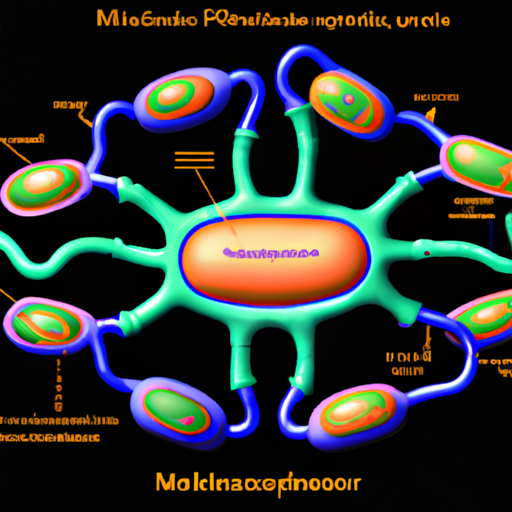What is the Meaning of Oxidative Phosphorylation: A Comprehensive Guide
Oxidative phosphorylation is a vital process that occurs in the cells of living organisms, including humans. It is a complex metabolic pathway that plays a crucial role in generating energy for various cellular activities. In this comprehensive guide, we will delve into the meaning of oxidative phosphorylation and explore its significance in cellular respiration.
Oxidative phosphorylation is the final step in the cellular respiration process, which involves the breakdown of glucose and other organic molecules to produce adenosine triphosphate (ATP), the primary energy currency of cells. It takes place within the mitochondria, often referred to as the powerhouse of the cell.
The process of oxidative phosphorylation can be divided into several key steps. Firstly, electrons derived from the breakdown of glucose are transferred to carrier molecules, such as nicotinamide adenine dinucleotide (NAD+) and flavin adenine dinucleotide (FAD). These electron carriers shuttle the electrons to the electron transport chain, located on the inner mitochondrial membrane.
The electron transport chain consists of a series of protein complexes, including NADH dehydrogenase, cytochrome b-c1 complex, cytochrome c oxidase, and ATP synthase. As the electrons pass through these complexes, they release energy, which is used to pump protons (H+) across the inner mitochondrial membrane, creating an electrochemical gradient.
This electrochemical gradient drives the synthesis of ATP through a process called chemiosmosis. ATP synthase, the enzyme responsible for ATP production, utilizes the energy from the proton gradient to convert adenosine diphosphate (ADP) and inorganic phosphate (Pi) into ATP. This process is known as phosphorylation, as the addition of a phosphate group to ADP forms ATP.
The significance of oxidative phosphorylation lies in its ability to generate a large amount of ATP efficiently. Compared to other metabolic pathways, such as glycolysis, oxidative phosphorylation produces a significantly higher yield of ATP molecules per glucose molecule. This is due to the fact that oxidative phosphorylation utilizes the energy stored in the electrons carried by NADH and FADH2, which are generated during earlier stages of cellular respiration.
Furthermore, oxidative phosphorylation is an aerobic process, meaning it requires oxygen as the final electron acceptor in the electron transport chain. Oxygen acts as a powerful oxidizing agent, accepting the electrons and forming water as a byproduct. Without oxygen, the electron transport chain cannot function properly, leading to a decrease in ATP production and potential cell damage.
In conclusion, oxidative phosphorylation is a crucial process in cellular respiration that generates ATP, the energy currency of cells. It involves the transfer of electrons through the electron transport chain, creating a proton gradient that drives ATP synthesis. Understanding the meaning and significance of oxidative phosphorylation provides valuable insights into the fundamental processes that sustain life at a cellular level.
Remember to consult with a professional or refer to scientific literature for more detailed and specific information on oxidative phosphorylation and its associated topics.
Keywords: oxidative phosphorylation, cellular respiration, ATP production, electron transport chain, mitochondria, energy metabolism.




